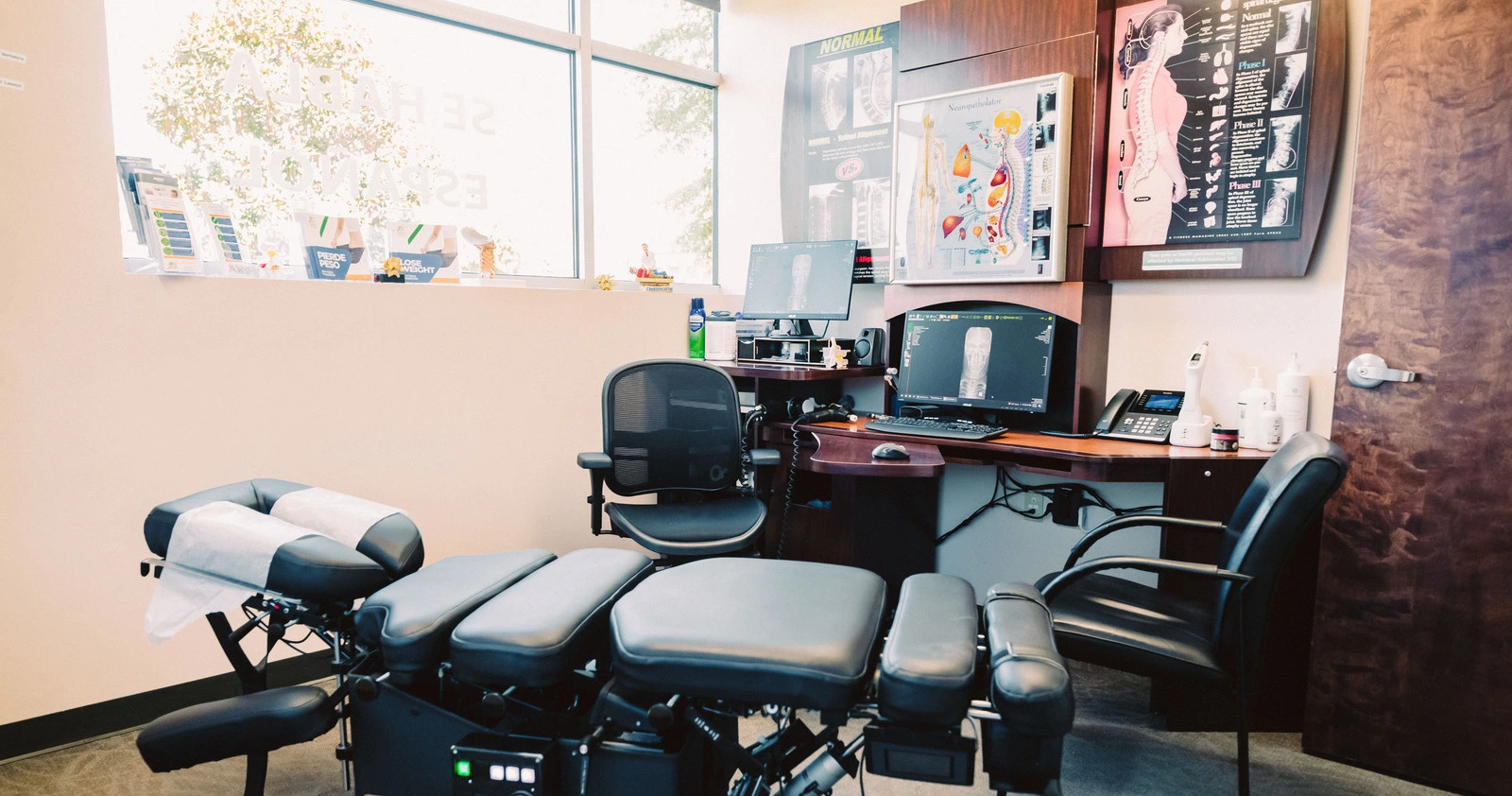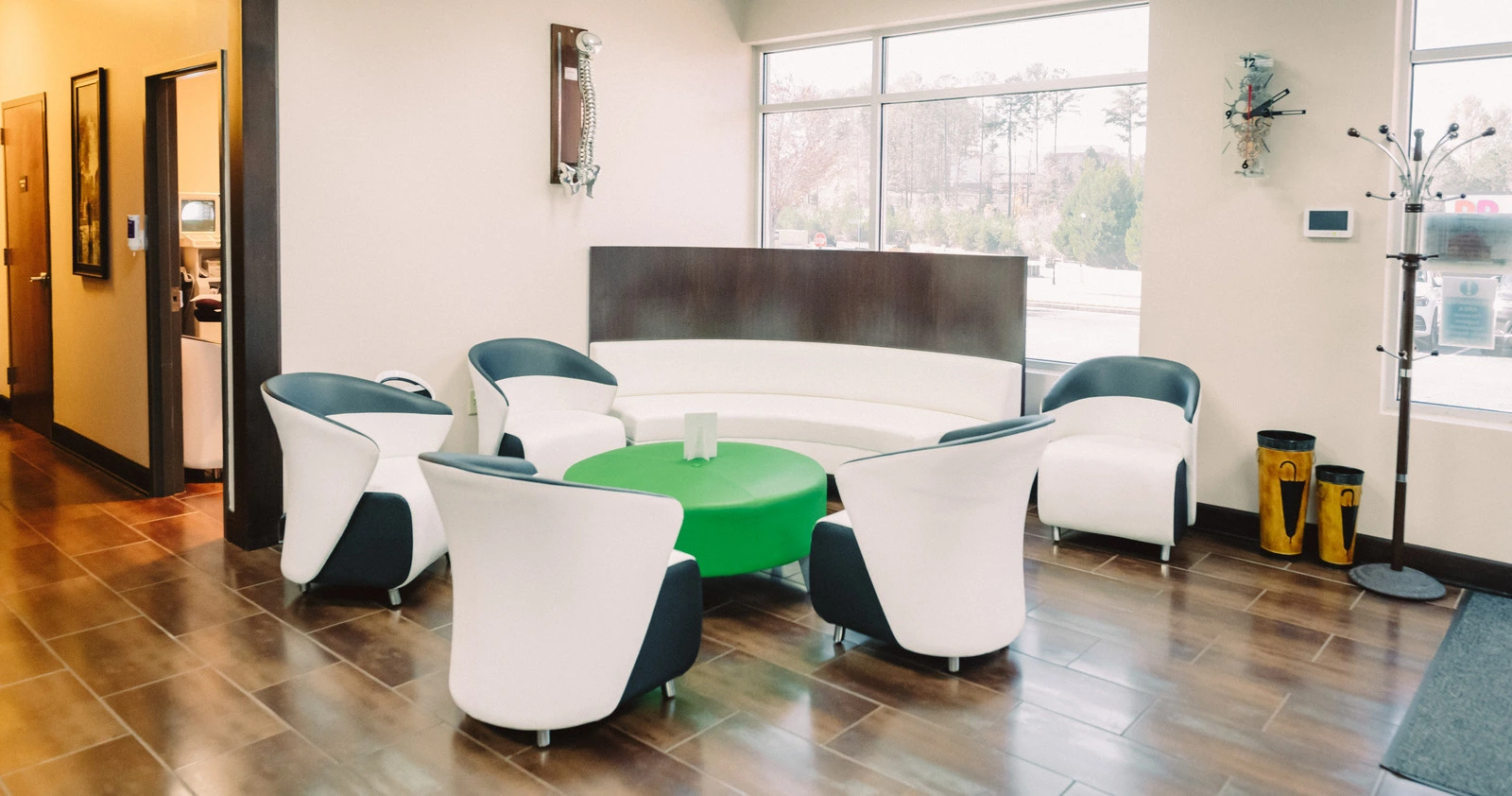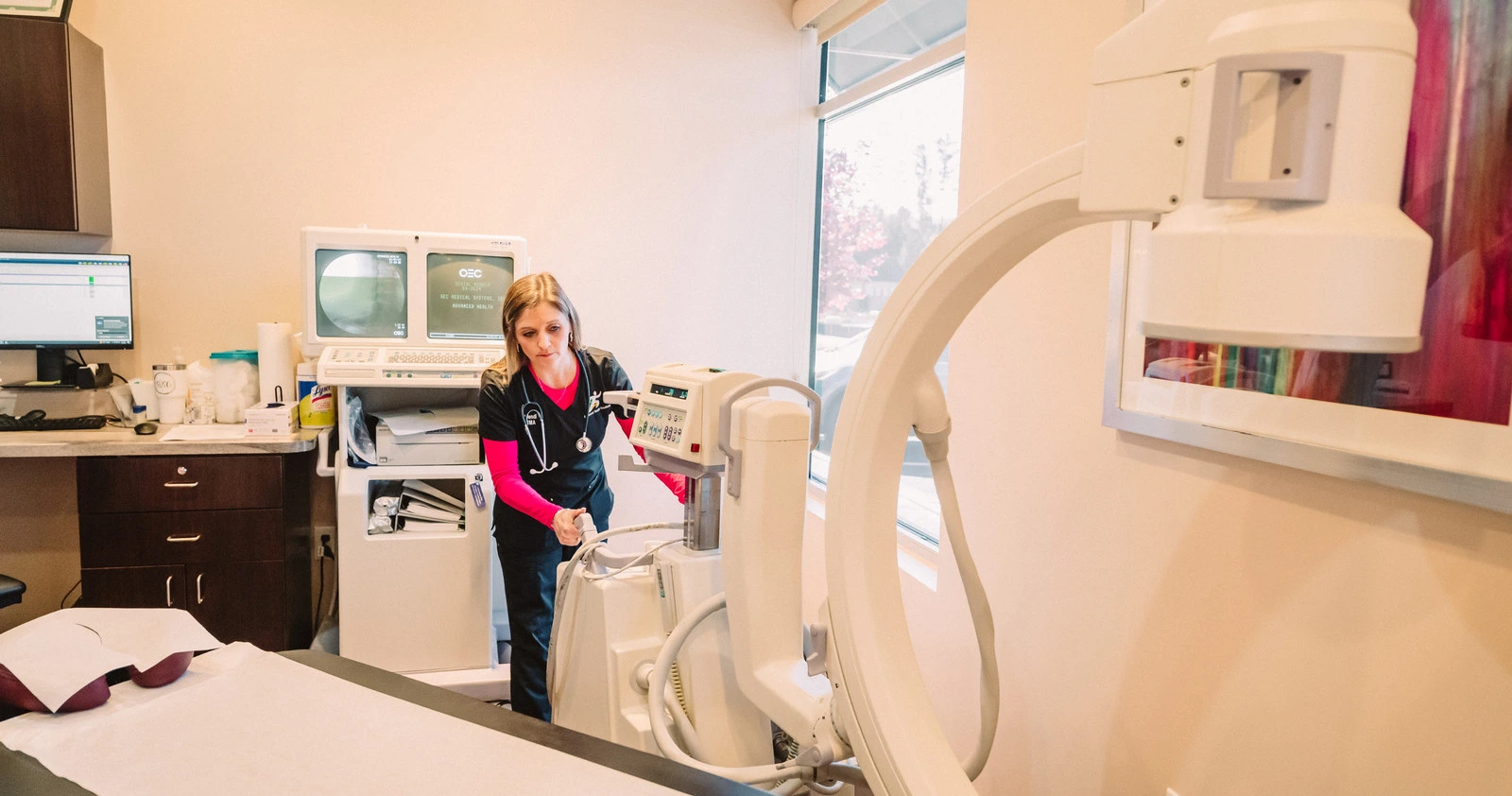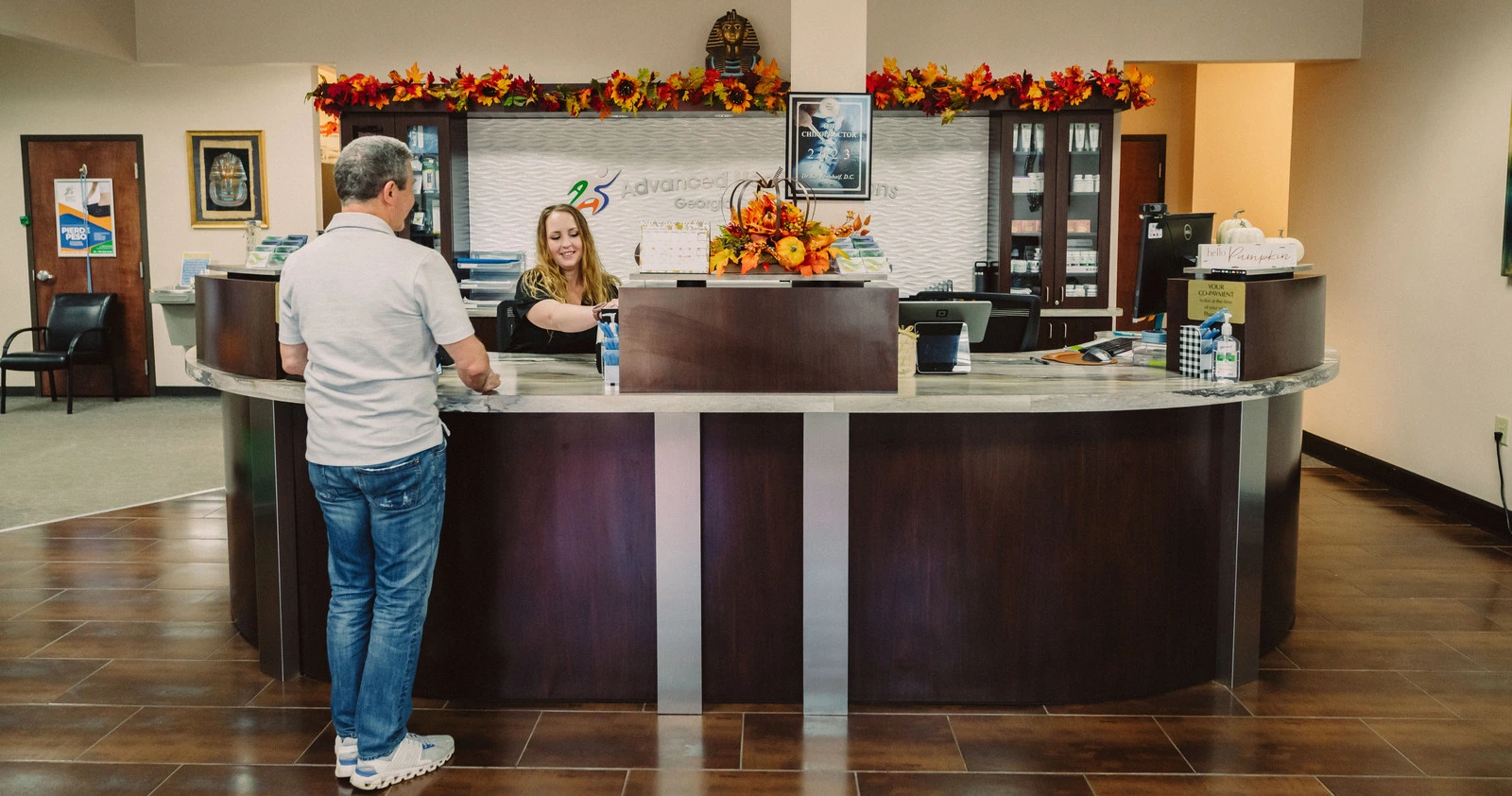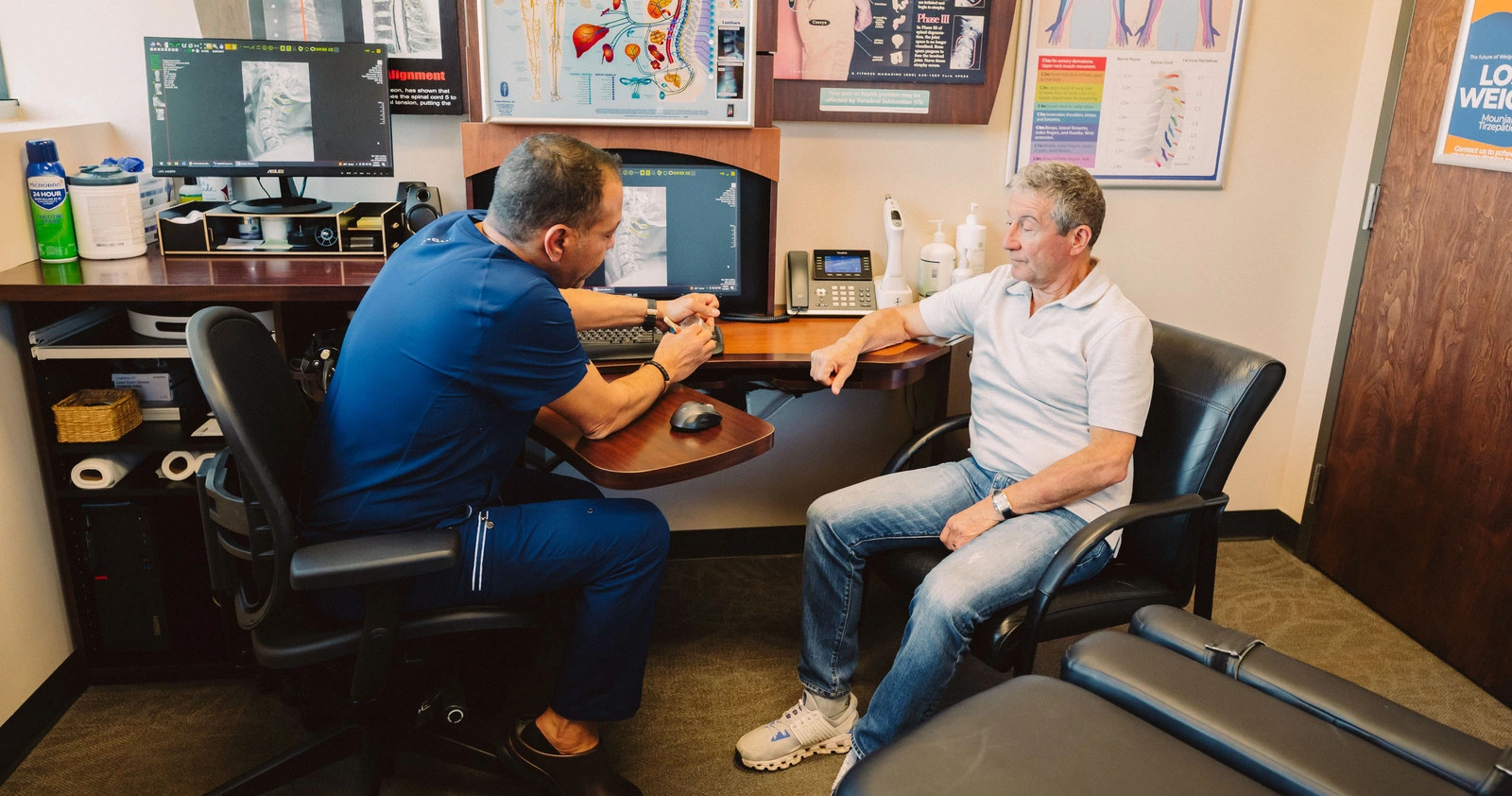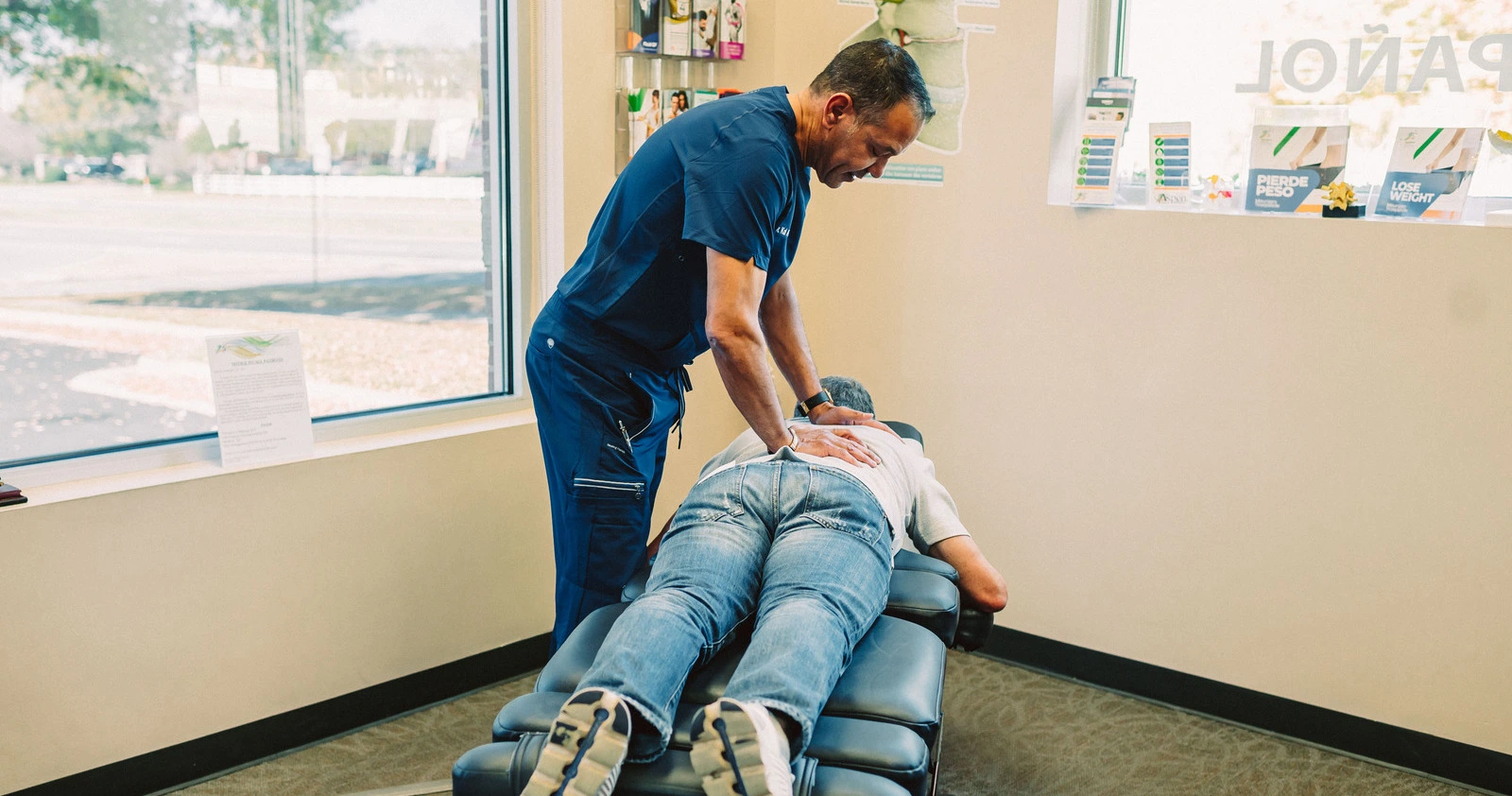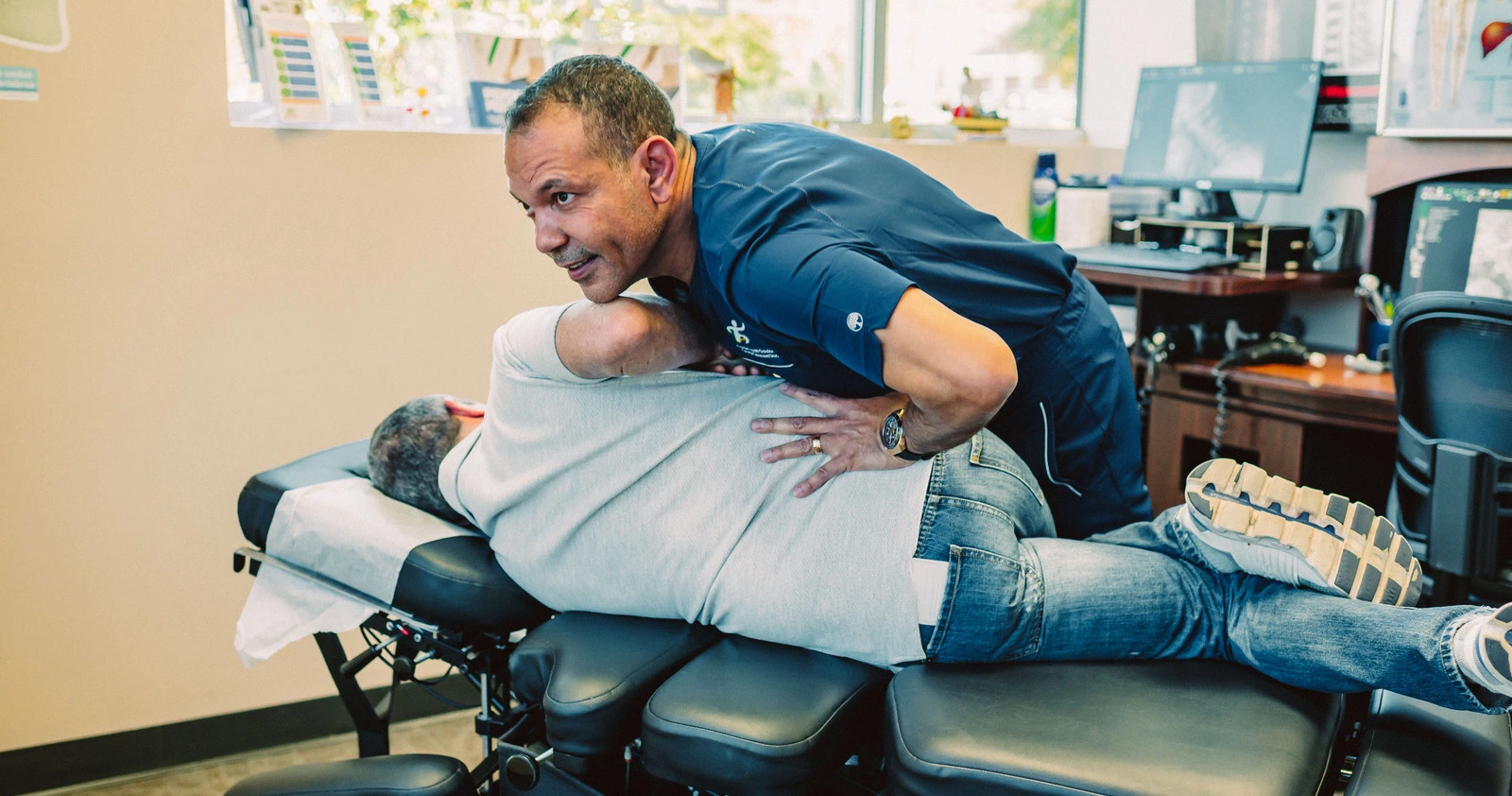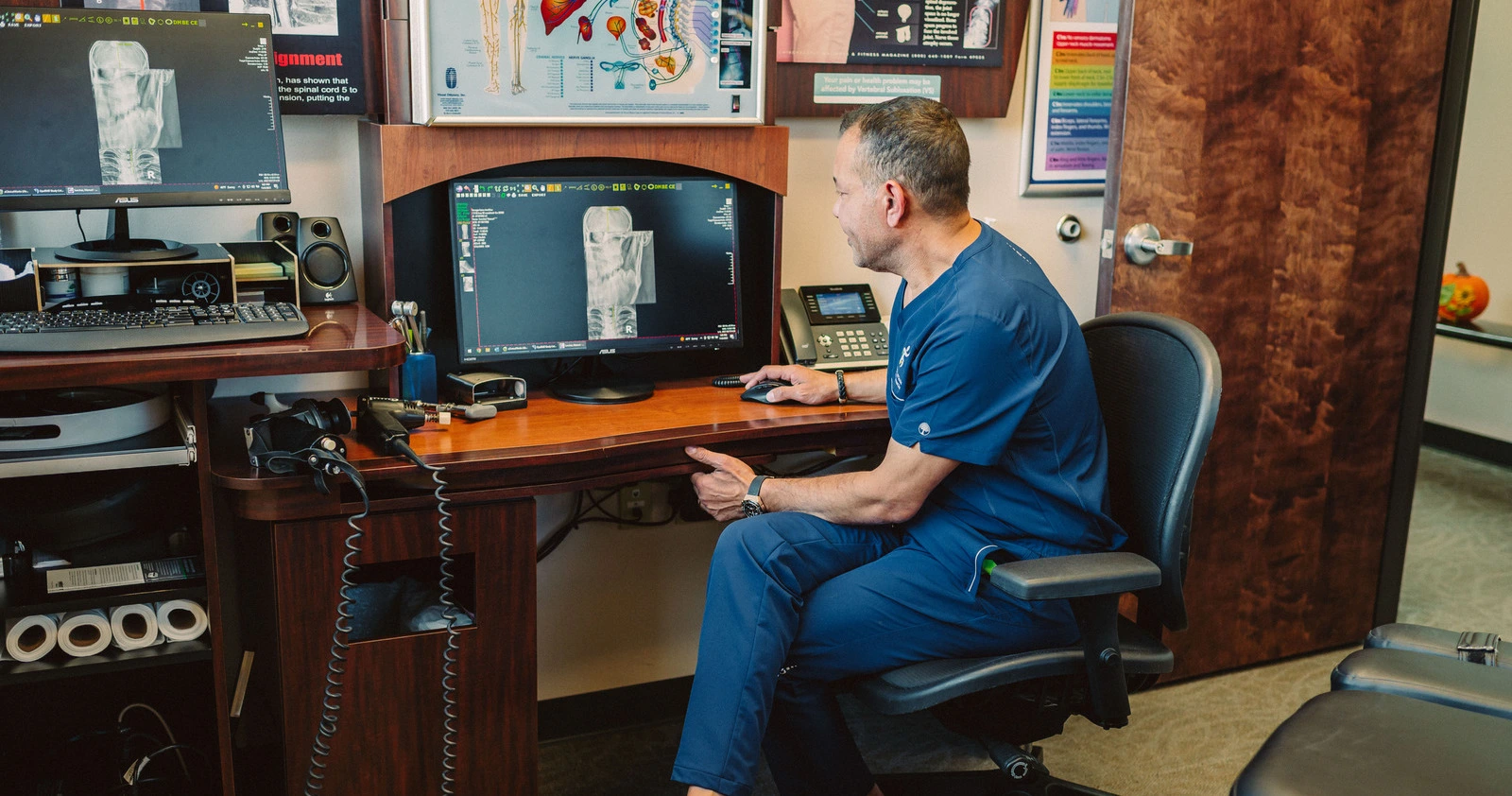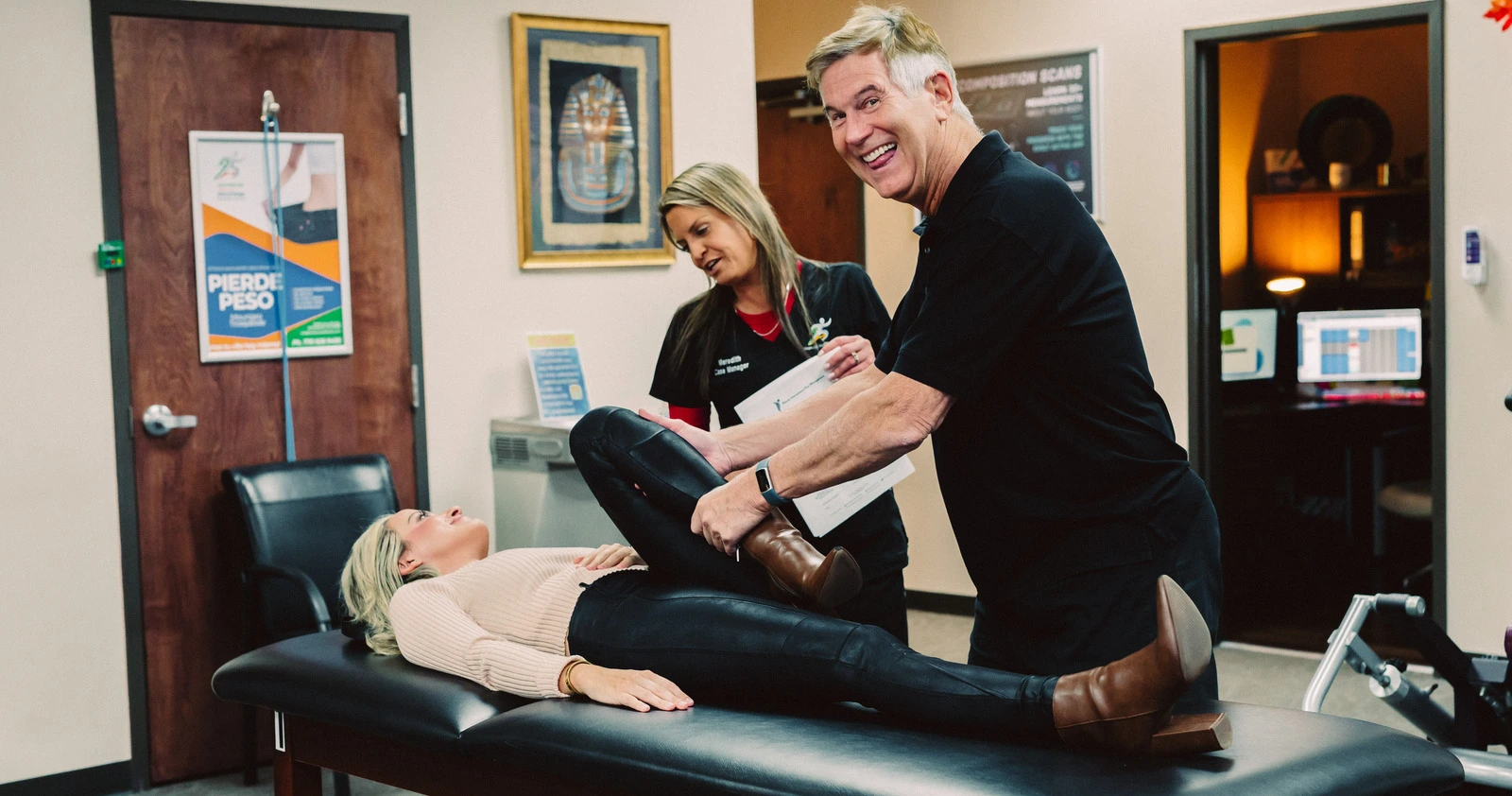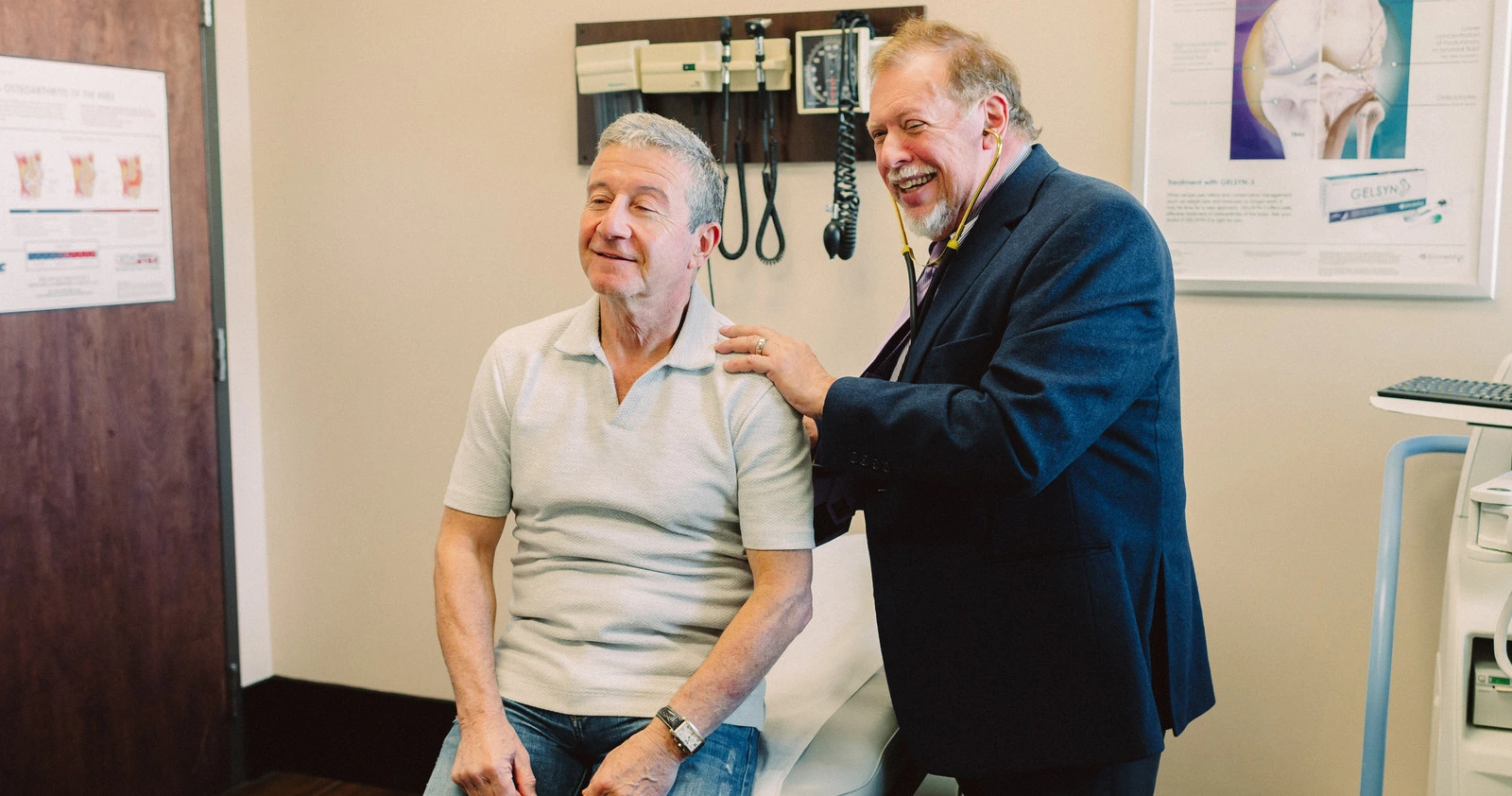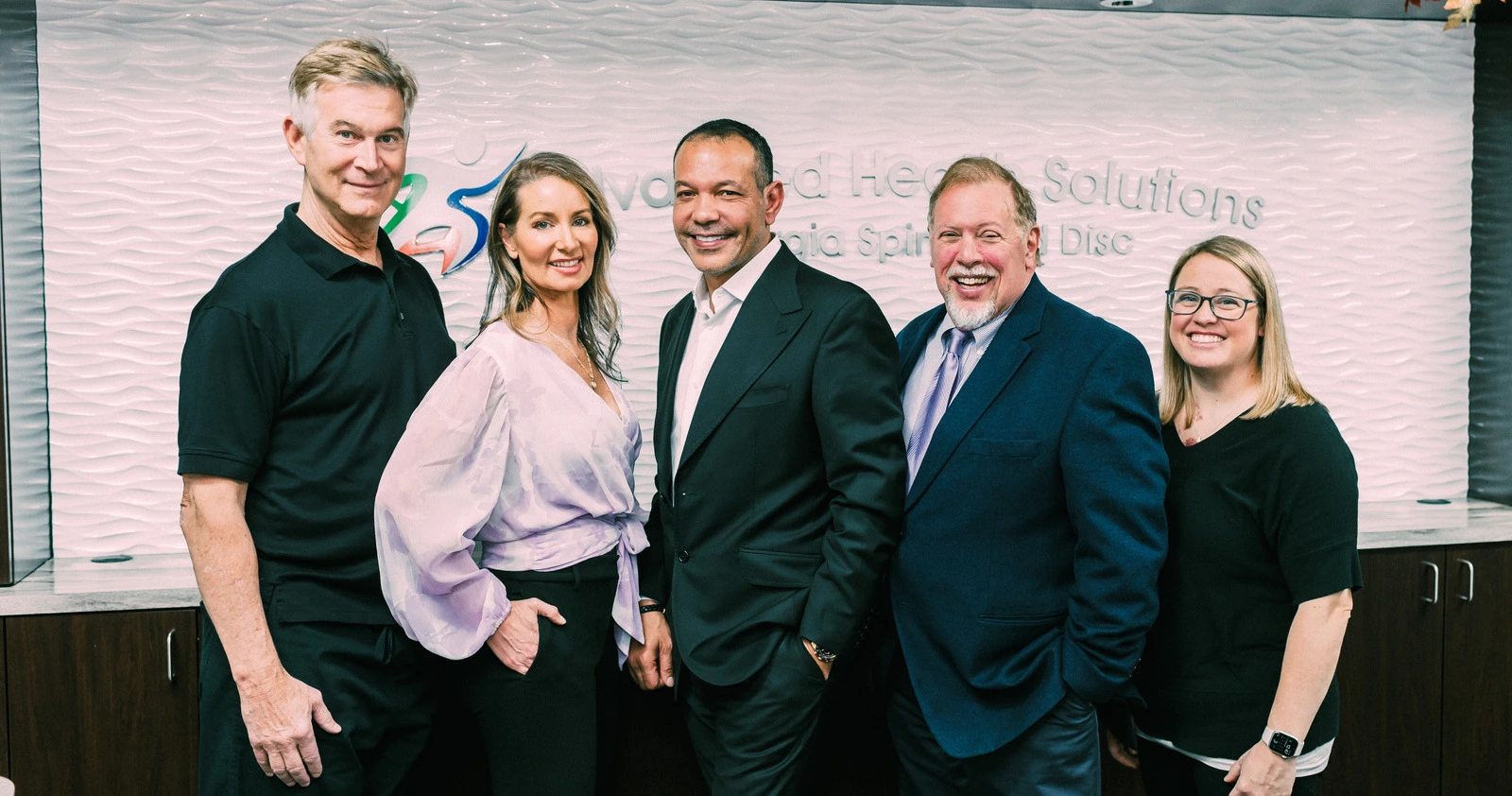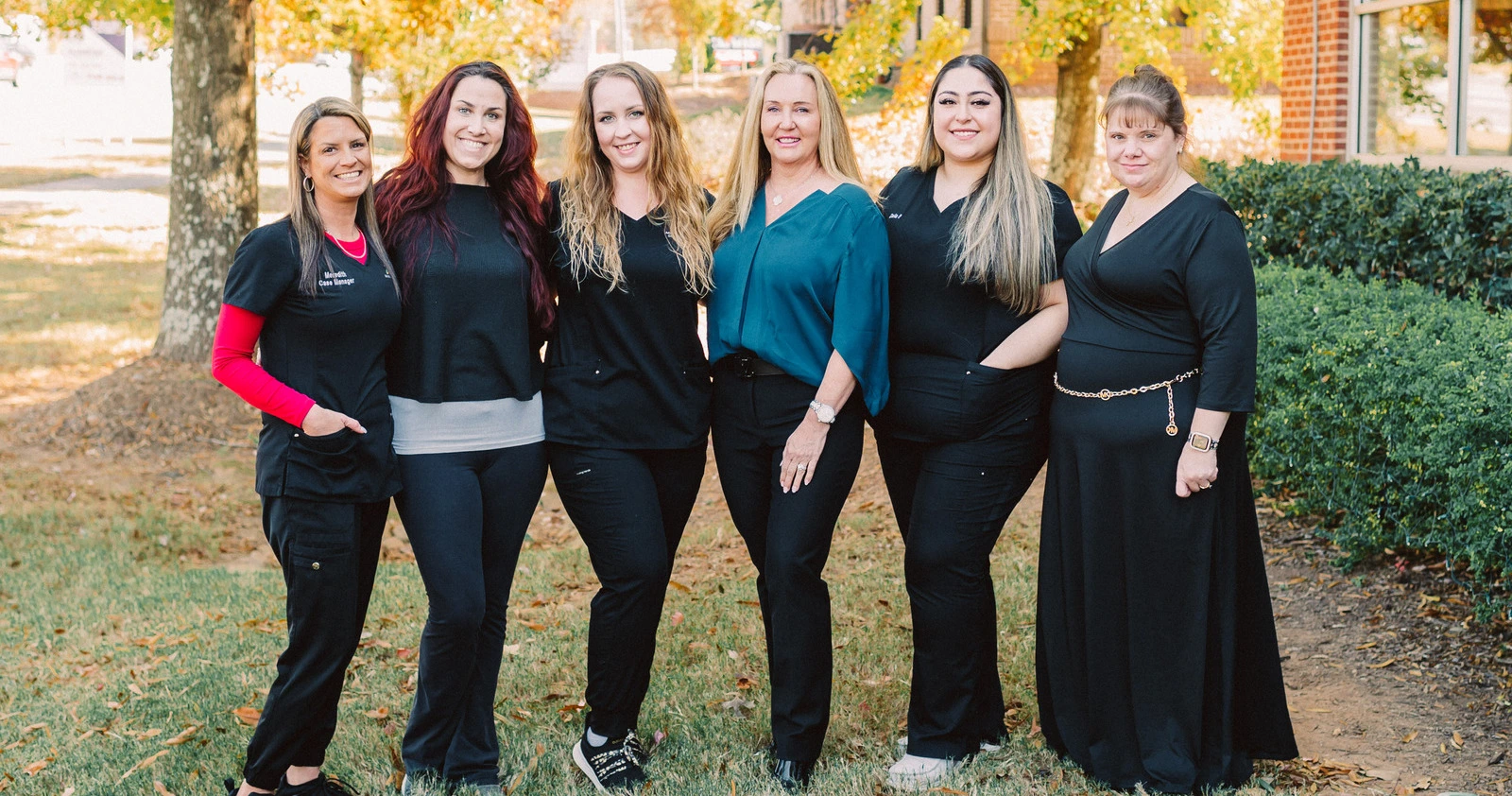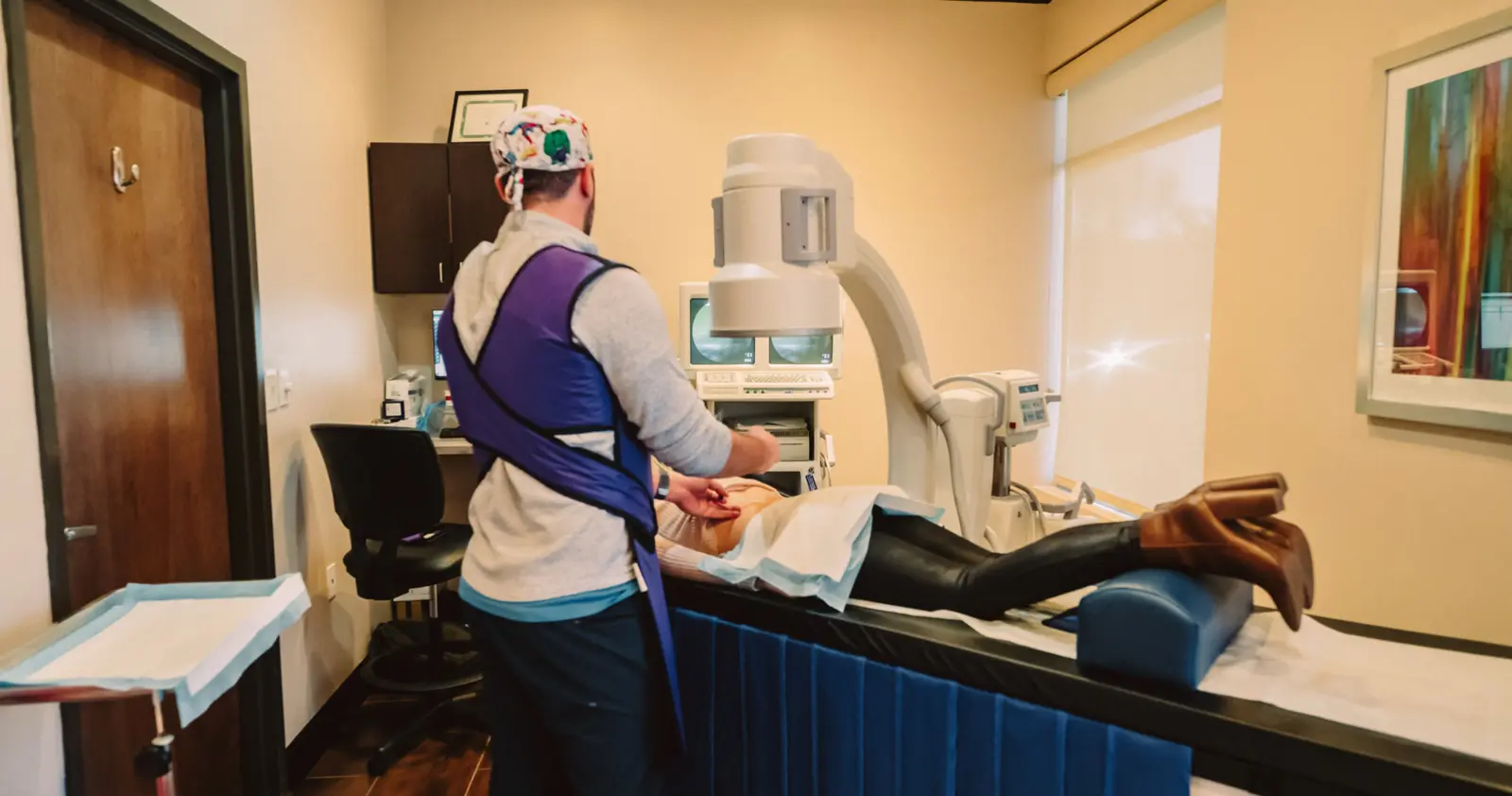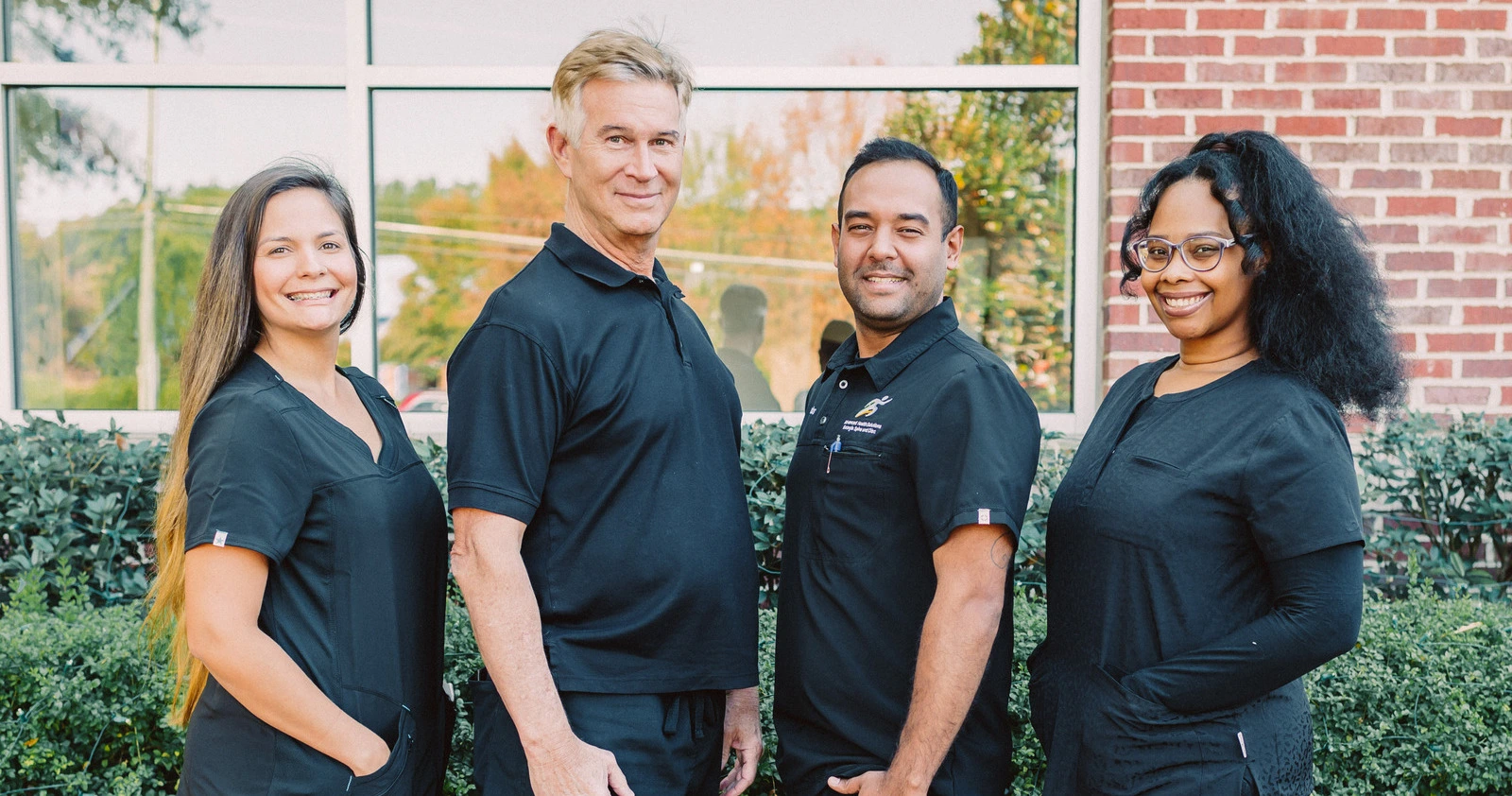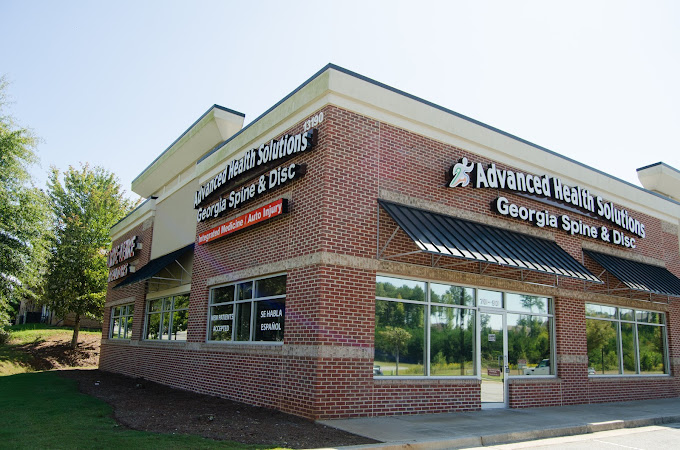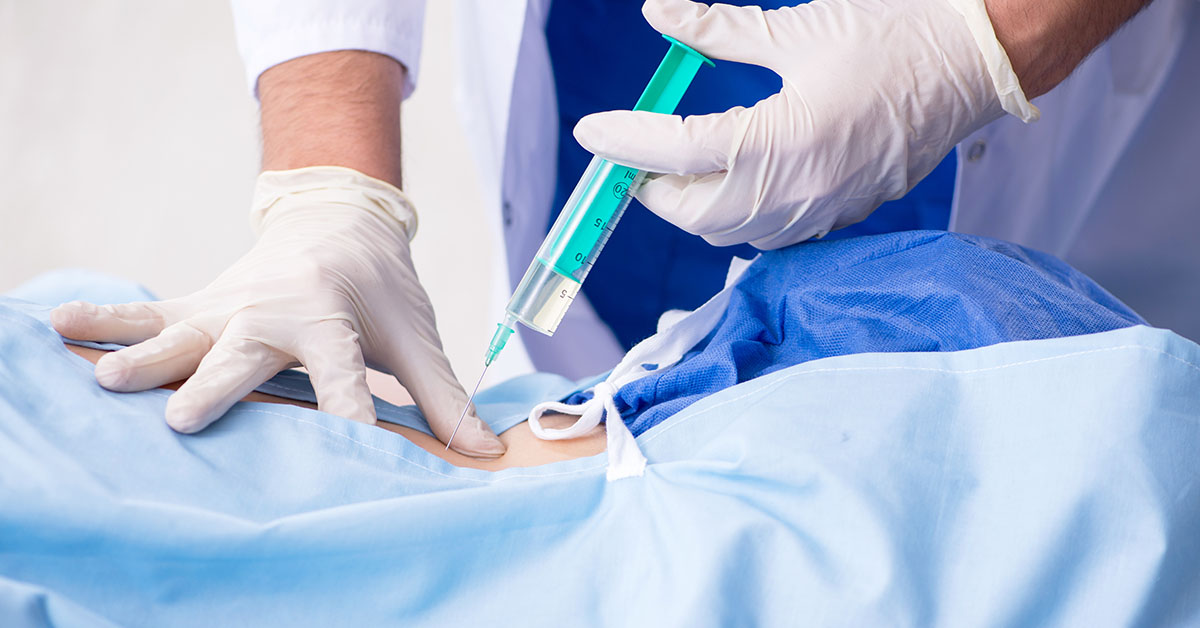
Joint Regeneration Therapy
Stiff and achy joints make it tough to get through the day. Whether it affects your knees, hips, elbows, or shoulders, chronic joint pain can be debilitating. When conservative treatments have not brought you relief and surgery isn’t an option, regenerative medicine may be the solution. Joint regeneration therapy harnesses the renewing and restorative power of stem cells to treat various joint conditions.
Stem cells are cells that have the potential to become several different types of cells. One type of stem cell—a mesenchymal stem cell—can become a muscle cell, a bone cell, a cartilage cell, or any of about a dozen other types of cells. Virtually all mature cells in our bodies that make up our tissues and organs start out as stem cells.
Therapeutic stem cells have the potential to repair and replace aged or injured tissues. The latest research also shows that stem cells release high concentrations of helpful molecules that modulate the immune system, improve wound healing, and treat a variety of diseases.
What Do Stem Cells Do?
Stem cells have two main functions. The first function is to serve as the building blocks for the body. Stem cells differentiate or specialize into different cell types to create tissues and organs during development. The second function is renewal, repair, and recovery.
Stems cells can replace old (senescent), injured, or dead cells with new cells of the same type. Stem cells naturally replace aged cells or they can speed up recovery, treat an injury, or reverse the signs of aging.
Where Do Stem Cells Come From?
Most tissues in the body contain some stem cells; however, they tend to be few and far between. That being said, researchers have found a few plentiful sources of stem cells.
Large populations of stem cells can be harvested from embryonic tissue, umbilical cord tissue/Wharton’s Jelly, adipose tissue (fat), and bone marrow. The use of embryonic stem cells is still quite controversial, but stem cells from other sources are not.
Umbilical cord tissue is collected after a child’s birth from the cord that would otherwise be discarded as medical waste. Stem cells can also be created in a lab by genetically reprogramming adult cells. Lab-created stem cells are called induced pluripotent stem cells.
How Do Stem Cells Treat Illnesses?
Stem cells are the body’s natural way to repair damaged tissue, heal wounds, and support healthy tissue growth. By infusing relatively high concentrations of stem cells into the body, the body’s natural ability to heal and repair itself is magnified.
At Advanced Health Solutions – GA Spine & Disc, we specialize in the emerging field of regenerative medicine — procedures that boost your own body’s ability to heal itself — and offer the following effective forms of joint regeneration therapy that could help you overcome your joint pain.
-
Stem Cell Therapy
Perhaps one of the best-known types of regenerative medicine, stem cell therapy has been in the press a lot lately. That is because doctors and chiropractors have been using it to treat joint and tissue damage with success. For instance, one study followed patients with osteoarthritis in their knees and reported continued improvement even five years after their treatments.
The reason it works so well is that it involves stem cells, which have the unique ability to morph into any type of cell they are near. If you have deteriorated cartilage and ligaments in your joints, stem cells injected into your knee or shoulder can transform and regenerate those tissues.
We start by extracting stem cells from another place on your body, typically bone marrow from your iliac crest (hipbone). Then we inject them into your joint to initiate your body’s own healing process.
-
Platelet-Rich Plasma (PRP)
More and more people who suffer from knee osteoarthritis are turning to platelet-rich plasma to treat their joint pain. While it has been used for more than three decades for tendinosis, it has gained popularity since the early part of this century for its efficacy in the treatment of arthritis.
In this procedure, the doctor draws a small sample of blood from your arm — it is similar to a routine blood draw in a lab. He places that blood into a centrifuge, which spins it at a high speed to isolate the platelets from other components in your blood, like the red and white blood cells. Once it is ready, he injects the concentrated solution into your painful joint.
Those platelets secrete growth factors that boost cell division, prompt your tissues to regenerate, and speed up the healing process. Studies show that PRP for knee osteoarthritis often stops the progression of the disease and reduces pain.
-
Prolotherapy
Prolotherapy is a type of regenerative therapy that treats injured joints and connective tissues. It is often used to treat arthritis, whiplash, and degenerative disc disease. It can also be used on the neck, back, shoulders, hands, hips, and knees.
Prolotherapy is based on the premise that your body naturally sends resources to a site that needs healing. This procedure involves an injection but does not require a blood draw or the harvesting of stem cells.
So, the doctor injects a safe solution of glucose (sugar water) into your joint, where it acts as an irritant and stimulates your body’s defense and healing mechanisms.
The injection generally contains no drugs or steroids, although the doctor may opt to add a dose of lidocaine to help numb the area and keep you comfortable during the procedure. The injection irritates the injury site, triggering the body’s healing response.
As a result, the body will grow new connective fibers to repair the damaged tissue. This joint regeneration therapy relieves the pain associated with the damaged connective tissue. Several treatments may be done to stimulate more new tissue growth.
The goal of prolotherapy is to reduce inflammation and pain while promoting the regeneration of damaged tissues, such as ligaments and tendons. Many patients report less pain and better mobility.
-
Cartilage Regeneration
Another type of regenerative therapy that can help people with musculoskeletal conditions, including joint pain is cartilage regeneration. This therapy is aimed at healing damaged cartilage.
Cartilage does not heal well on its own because it does not contain blood vessels and doesn’t always have a constant blood supply. There are several techniques used for cartilage regeneration.
According to research from Johns Hopkins Medicine, cartilage regeneration is ideal for active people under 55 years old.
-
Amniotic Membrane Injections
Amniotic membrane injection is a type of regenerative therapy that uses the amniotic membrane tissue of the placenta from a fully consented mother during the delivery. The powerful properties found in this tissue, which is typically discarded with the placenta after delivery, have several applications in the field of regenerative medicine.
A doctor injects a solution containing the amniotic membrane into your joint, where it releases several healing components, including growth factors, hyaluronic acid, collagen, cytokines, and fibrinogen
Amniotic membrane injections not only help with joint pain and other sports medicine and orthopedic applications but they have also been shown to help heal wounds and surgical sites.
How Does Regenerative Therapy Work?
While the stem cells existing naturally in tissues can respond to age-related changes or injury, they tend to work slowly and inefficiently. This is especially true as people age—the number and regenerative capacity of stem cells decrease with age. When doctors infuse stem cells into the body, they achieve four main goals:
- Increase the number of stem cells in an area – Relatively few stem cells normally exist in the body. Joint regeneration therapy greatly increases the number of available stem cells, and they can be infused where they are needed (e.g., near a degenerating spinal disc, into an arthritic knee, etc.)
- Tilt the number of stem cells from older to newer stem cells – The older we get, the older our stem cells become. When stem cells are obtained from umbilical cord tissue, for example, they are virtually brand new and have maximal regenerative capacity.
- Infused stem cells become new, differentiated cells to replace old, dead, or damaged cells – Stem cells can become new, differentiated cells depending on where they find themselves. Stem cells that reach the liver can become new liver cells, for example. This effect can be especially useful for treating tissue injury or degeneration.
Benefits of Regenerative Cell Therapy
- Pain relief
- Less inflammation
- Enhanced healing and tissue regeneration
- Freedom from surgery (or have been able to delay surgical treatment)
- Faster recovery from surgery or injury
- Very low occurrence of adverse effects especially compared to invasive treatments
Is Regenerative Therapy Safe?
Regenerative therapy is remarkably safe. There are over 700 completed Phase 1 trials of regenerative therapy. (Phase 1 trials that directly assess patient safety) The rate of serious adverse effects during these trials is extremely low. While any injected treatment comes with a certain amount of risk, regenerative therapy is quite safe relative to other infused treatments.
Regenerative Therapy and Arthritis
Regenerative therapy has considerable potential to treat arthritis, a condition that has very few effective non-surgical treatments. Regenerative therapy has the potential to rebuild cartilage and joint surfaces destroyed by arthritis, reduce the chronic inflammation that makes arthritis painful and destructive, and provide cellular signals (i.e., cytokines) to slow the progression of arthritis.
Using Regenerative as a Surgical Alternative
Many patients choose regenerative therapy as an alternative to surgery like artificial disc replacement for several reasons. First, regenerative therapy is far less invasive than surgery. An injection into a knee joint is certainly less invasive than a knee replacement.
Likewise, there is no downtime or recovery time after regenerative therapy. Recovery after knee, hip, or spine surgery may take weeks to months. In many cases, regenerative therapy is less expensive than surgery. Lastly, patients can still opt for surgery if regenerative therapy fails to relieve their symptoms to their satisfaction.
Schedule Your Appointment Today
Before we perform any of these regenerative procedures, we will thoroughly examine you and evaluate your overall health. We start your treatment with conservative measures first, including nonsteroidal anti-inflammatory drugs like ibuprofen, physical therapy, ice and rest, and even weight loss when necessary.
If traditional methods fail to alleviate your pain, we will discuss your regenerative medicine options to determine which might be a good match for your symptoms.
Joint Regeneration Therapy
At Advanced Health Solutions – GA Spine & Disc, we are more than happy and ready to help you get the pain relief that you need. We offer top-quality, effective, and safe joint regeneration therapy that can relieve your joint pain to help you get back to doing what you love to do in your daily routine.
So, if you have chronic joint pain, give us a call now at (770) 926-9495 or contact us online to book your appointment today.


